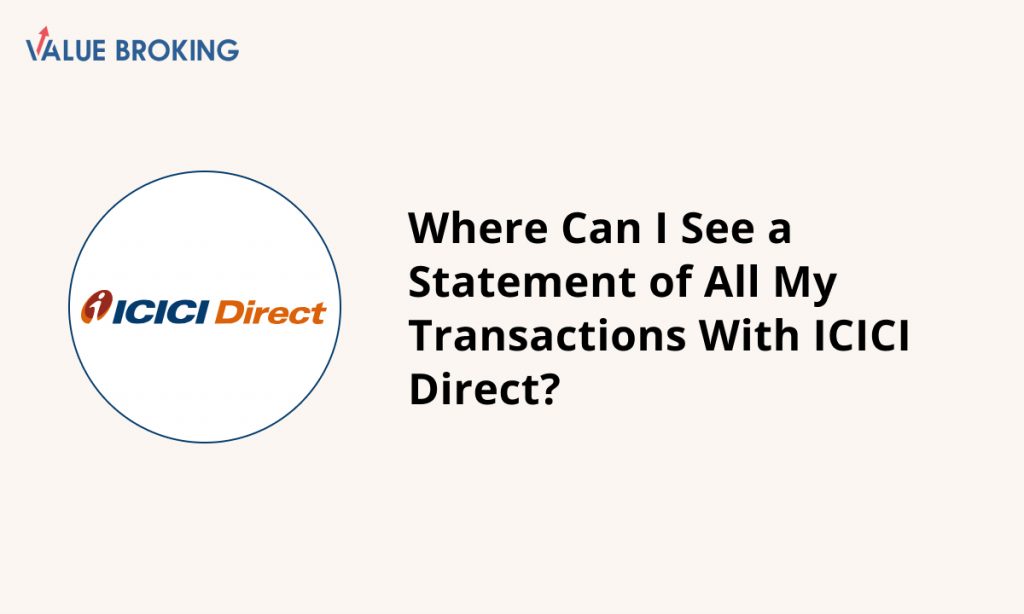Where Can I See a Statement of All My Transactions With ICICI Direct?

Keeping a close eye on your demat account statements is crucial for every investor. These statements provide a comprehensive overview of your stock holdings and transaction history. In the case of ICICI Direct, you can conveniently access and review these statements through various channels. In this article, we will guide you through the process of obtaining and interpreting your demat holding and account statements.
Demat Holding Statement vs. Demat Account Statement
Understanding the distinction between the demat holding statement and the demat account statement is essential. The demat holding statement showcases your current ownership of stocks, ETFs, bonds, mutual funds, and other dematerialized assets. It serves as concrete proof of ownership and can help identify any discrepancies in your holdings.
Conversely, the demat account statement tracks the movement of securities in and out of your account over a specific period. It records transactions such as purchases, sales, bonuses, rights issues, and transfers. This statement is instrumental in understanding the changes in your demat holdings.
Reading the Consolidated Demat Account Statement (DCAS)
Typically, you will receive a consolidated demat account statement from your DP (Depository Participant) that combines both the holding and transaction statements for simplicity. Here’s what you should look for:
Verify Basic Details: Ensure that your account information, including name, contact details, address, nominee information, etc., is accurate and up to date. Report any discrepancies to your DP promptly.
Cross-Check Transactions: Compare the entries in your demat account statement with the underlying data from sources like contract notes, daily trade reports, and ledger accounts provided by your trading account. Every transaction should be accurately reflected.
Verify Corporate Actions: Confirm that corporate actions like dividends (interim and final), bonus shares, rights issues, buybacks, stock splits, and schemes of arrangement are correctly credited within the stipulated time.
Understand Holding Categories: Your demat holding statement categorizes your securities into different segments, including free balance (available for sale), locked-in shares, pledged shares, shares under lien, and shares under dispute. Understanding these categories is crucial for making informed investment decisions.
Analyze Demat Holdings: This section provides a comprehensive list of all the securities held in your account, including mutual funds, ETFs, government bonds, and more. It strictly reflects ownership of assets, excluding F&O transactions and intraday trades.
Comprehend Demat Credits: Familiarize yourself with the various ways credits can be received in your demat account. This includes IPO allotments, secondary market purchases with T+1 delivery, and corporate actions like rights and bonus issues.
Review Debits to the Demat Account: Understand the triggers for debits, which primarily occur during share sales. Additionally, shares can be gifted, transferred through off-market transactions, or debited due to buybacks or unfulfilled collateral requirements.
Monitoring Your Demat Account Statements
Regularly monitoring your demat account statements is a fundamental practice. Ensure that any unauthorized transactions or debits are promptly reported to your DP and broker. If necessary, escalate the matter to regulatory authorities. Additionally, transactions should reflect in your account by T+1, providing an extra layer of security.
Conclusion
Staying vigilant about your ICICI Direct demat account statements is a critical aspect of managing your investments effectively. By understanding the nuances of both demat holding and account statements, you can make informed decisions and safeguard your investments. Remember, a proactive approach to monitoring statements is the key to a secure and thriving investment portfolio.